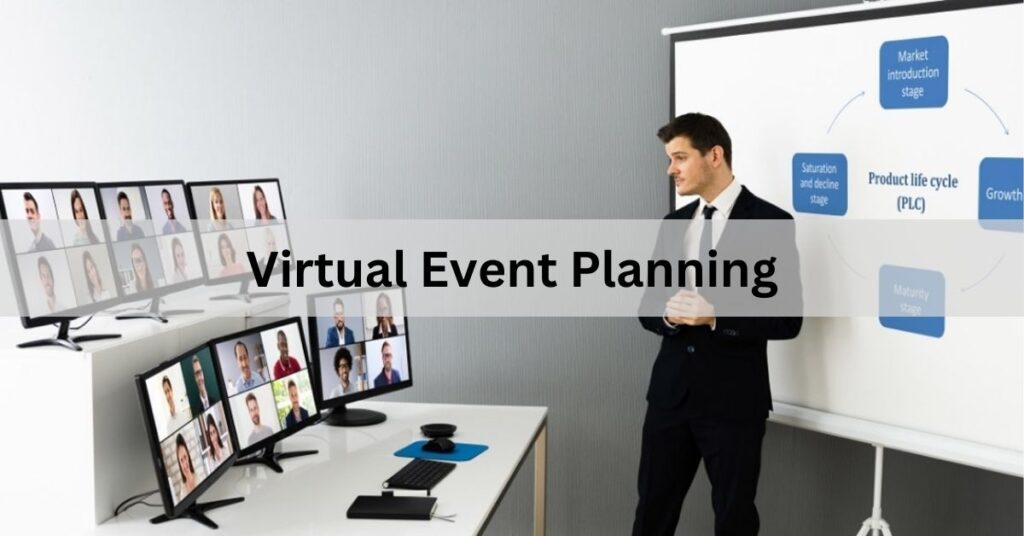Virtual events have become an essential part of modern business and social interactions. They offer flexibility, reach, and cost savings that physical events cannot match. This guide will explore the various aspects of virtual event planning, providing you with the knowledge and tools to create successful and engaging online events.
Understanding Virtual Events
Virtual events are gatherings held on digital platforms, allowing participants to join from anywhere in the world. They can range from webinars and conferences to trade shows and social gatherings. Virtual events leverage technology to deliver content, facilitate networking, and engage attendees, making them a versatile option for various purposes.
Benefits of Virtual Events
Virtual events offer numerous benefits over traditional in-person gatherings. They are cost-effective, eliminating expenses related to travel, venue rental, and catering. Virtual events are more accessible, allowing a global audience to participate without geographical constraints. Additionally, they provide valuable data and analytics, helping organizers understand attendee behavior and preferences, and improve future events.
Key Components of Virtual Event Planning
1. Defining Goals and Objectives
The first step in planning a virtual event is to define clear goals and objectives. Determine the purpose of the event, whether it’s to educate, network, or promote a product. Establish specific, measurable outcomes to gauge the event’s success. Clear goals will guide your planning process and ensure all efforts are aligned with your desired outcomes.
2. Choosing the Right Platform
Selecting the right platform is crucial for a successful virtual event. Consider factors such as the number of attendees, interactive features, and technical support. Popular platforms include Zoom, Microsoft Teams, and Hopin. Each platform offers different functionalities, so choose one that best fits your event’s needs.
3. Planning Content and Agenda
Engaging content is vital for keeping attendees interested and involved. Plan a diverse agenda that includes presentations, panel discussions, workshops, and networking sessions. Consider incorporating interactive elements like polls, Q&A sessions, and live chats to foster engagement. Ensure the content aligns with your event’s goals and provides value to attendees.
4. Marketing and Promotion
Effective marketing is essential to attract participants to your virtual event. Utilize various channels such as social media, email marketing, and partnerships with influencers or industry leaders. Create compelling promotional materials, including videos, infographics, and blog posts, to generate interest and excitement. Early promotion and regular updates will help maintain momentum and increase attendance.
5. Registration and Ticketing
Simplify the registration process to encourage sign-ups. Use user-friendly registration forms and offer multiple ticketing options, such as free, paid, or tiered tickets. Providing early-bird discounts or group rates can incentivize early registrations. Ensure the registration system integrates smoothly with your chosen event platform for a seamless experience.
6. Technical Preparation
Technical issues can disrupt the flow of your virtual event, so thorough preparation is crucial. Test all equipment and software in advance, including audio, video, and internet connections. Have a dedicated technical support team on standby to address any issues that arise during the event. Provide clear instructions for attendees on how to join and participate in the event.
Engaging Attendees
1. Interactive Features
Incorporate interactive features to keep attendees engaged. Use live polls, Q&A sessions, and chat rooms to encourage participation. Breakout rooms for smaller group discussions can foster networking and deeper engagement. Gamification, such as quizzes and contests, can add a fun element and increase attendee involvement.
2. Networking Opportunities
Networking is a key aspect of any event, and virtual events are no exception. Facilitate networking by creating dedicated spaces for attendees to connect. Virtual lounges, speed networking sessions, and matchmaking algorithms can help participants find and interact with peers, industry leaders, and potential partners.
3. Content Delivery
Deliver content in a dynamic and engaging manner. Use a mix of live and pre-recorded sessions to maintain variety. High-quality visuals, clear audio, and professional presentations are essential for retaining audience attention. Encourage speakers to interact with the audience and address questions in real-time to create a more interactive experience.
Post-Event Activities
1. Follow-Up Communication
Maintain engagement with attendees after the event through follow-up communication. Send thank-you emails, share recordings of sessions, and provide additional resources or materials. Collect feedback through surveys to understand what worked well and what could be improved for future events.
2. Analyzing Data and Metrics
Utilize the data and analytics gathered during the event to evaluate its success. Analyze metrics such as attendance rates, engagement levels, and feedback scores. Identify trends and insights that can inform future event planning and marketing strategies.
3. Building Community
Build a community around your virtual event to keep the momentum going. Create online forums or social media groups where attendees can continue discussions and networking. Regularly share updates, industry news, and valuable content to keep the community engaged and connected.
Conclusion
Virtual event planning offers a powerful way to connect with audiences globally, providing flexibility, cost savings, and valuable data insights. By defining clear goals, choosing the right platform, planning engaging content, and promoting effectively, you can create successful and memorable virtual events. Engaging attendees through interactive features, networking opportunities, and dynamic content delivery ensures a positive experience. Post-event activities like follow-up communication and data analysis help refine your approach for future events. Embrace the potential of virtual events to reach wider audiences, foster meaningful connections, and achieve your event objectives.

















